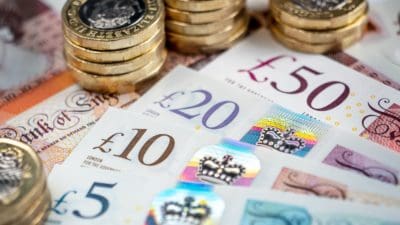A lot of investment commentators refer to a price-to-earnings ratio when writing about shares. But what is this P/E ratio? Why does it matter?
Valuation metric
To understand the role of a P/E ratio, it’s helpful to start by thinking about share prices. A company’s share price helps explain its market capitalisation. If a company has a share price of £1 and 1m shares in circulation, its market cap is £1m. If the share price doubles to £2 and the number of shares remains the same, the market capitalisation would be £2m.
What does that mean? In theory, it means that if someone came along with £2m to spend, they would be able to buy all of the company’s shares and thus the company. In practice things may be more complicated, as for example a bidder may need to offer a premium to persuade existing shareholders to part with their shares. Nonetheless, a market cap is a good albeit rough guide to a company’s valuation. But how do investors decide such a valuation?
P/E ratio and valuation
One way to do this is by looking at a company’s earnings. Let’s say that to buy the company with a £2m valuation, I want to borrow the £2m. I could hopefully use the earnings from the company to pay back my loan. If the company earnings are £200,000 per year, it would take me 10 years to pay off the £2m. If the price (£2m) is divided by the earnings (£200,000) the arithmetic result is 10. So, we say that the company has a P/E ratio of 10.
In reality, things wouldn’t work quite like that. The longer I took to repay my debt, the more I would usually have to pay in interest. Plus, many companies’ earnings aren’t smooth. So just because a company earns £200,000 this year, it doesn’t mean the same will happen next year.
But a P/E ratio could still give me some important information. A low P/E ratio can suggest the company may be trading cheaply. A high P/E ratio may mean it is overvalued. Even as a private investor looking at the share price, not a takeover firm thinking of buying the whole company, that valuation metric could be useful to me.
Looking at the bigger picture
So, does that mean that Imperial Brands with its P/E ratio of less than seven is a bargain, or that Spirax-Sarco with a P/E ratio over 60 is overpriced?
Not necessarily. That is because earnings could change in future. Imperial’s tobacco focus risks earnings falling as people quit smoking. Spirax-Sarco has demonstrated it can grow earnings, for example by making acquisitions. Using my example above of buying a company with debt then repaying the loan from future earnings, that could help explain Imperial’s low P/E ratio and Spirax-Sarco’s high P/E ratio.
It’s important to remember that a P/E ratio is only one of a number of valuation metrics many investors use. Used properly, though, I do find a P/E ratio is a useful and simple analytical tool to help me make investment decisions. It can help me identify possibly undervalued companies that merit further investigation as potential additions to my portfolio.







